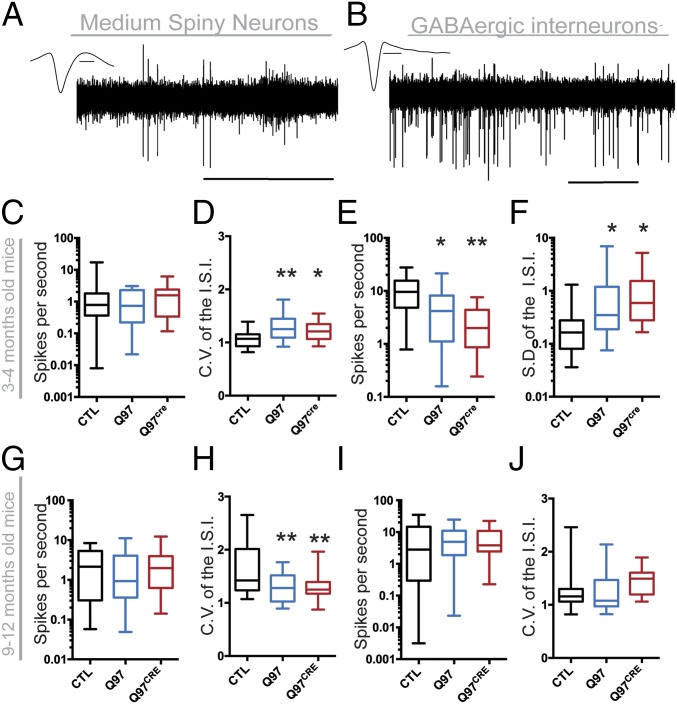Fig. 4.
Both Q97CRE and Q97 mice exhibit abnormal striatal electrophysiological activity. (A and B) Drivable microarrays were implanted within the dorsolateral striatum to record the single-unit activity of awake, behaving 3- to 4-mo-old and 9- to 12-mo-old mice. (C) In 3- to 4-mo-old mice, MSN firing rates from Q97 (n = 22) and Q97CRE (n = 20) mice were similar to CTL (n = 27) mice. (D) ISI CV was increased in Q97 and Q97CRE MSNs compared with CTL MSNs. (E) GIN firing rates from Q97 (n = 21) and Q97CRE (n = 15) mice were significantly lower than in CTL (n = 27) mice. (F) In comparison to CTL units, the SD of the ISI of GINs was higher for both Q97 and Q97CRE units. In 9- to 12-mo-old mice, MSN firing rates from Q97 (n = 23) and Q97CRE (n = 27) mice were similar to CTL (n = 26) mice (G); however, the CV of the ISI was decreased in both Q97 (n = 23) and Q97CRE (n = 27) mice in comparison to CTL (n = 26) units (H). No differences were detected in the firing rate (I) or the CV of the ISI of GINs (J). Data are shown as whisker box plots representing the median (at the center), interquartile range (outer box), and minimum and maximum values (whiskers). *P < 0.05; **P < 0.001.

